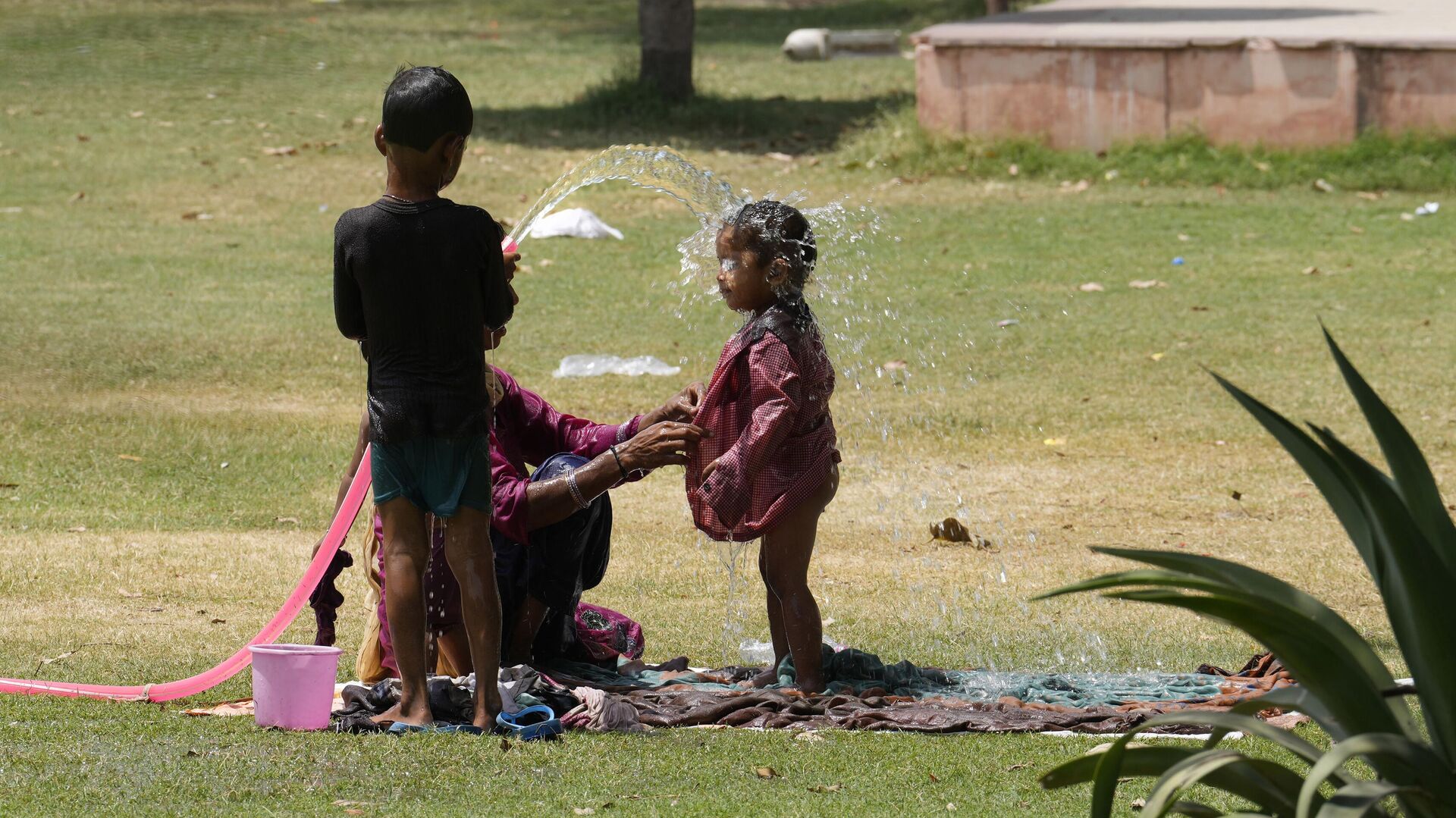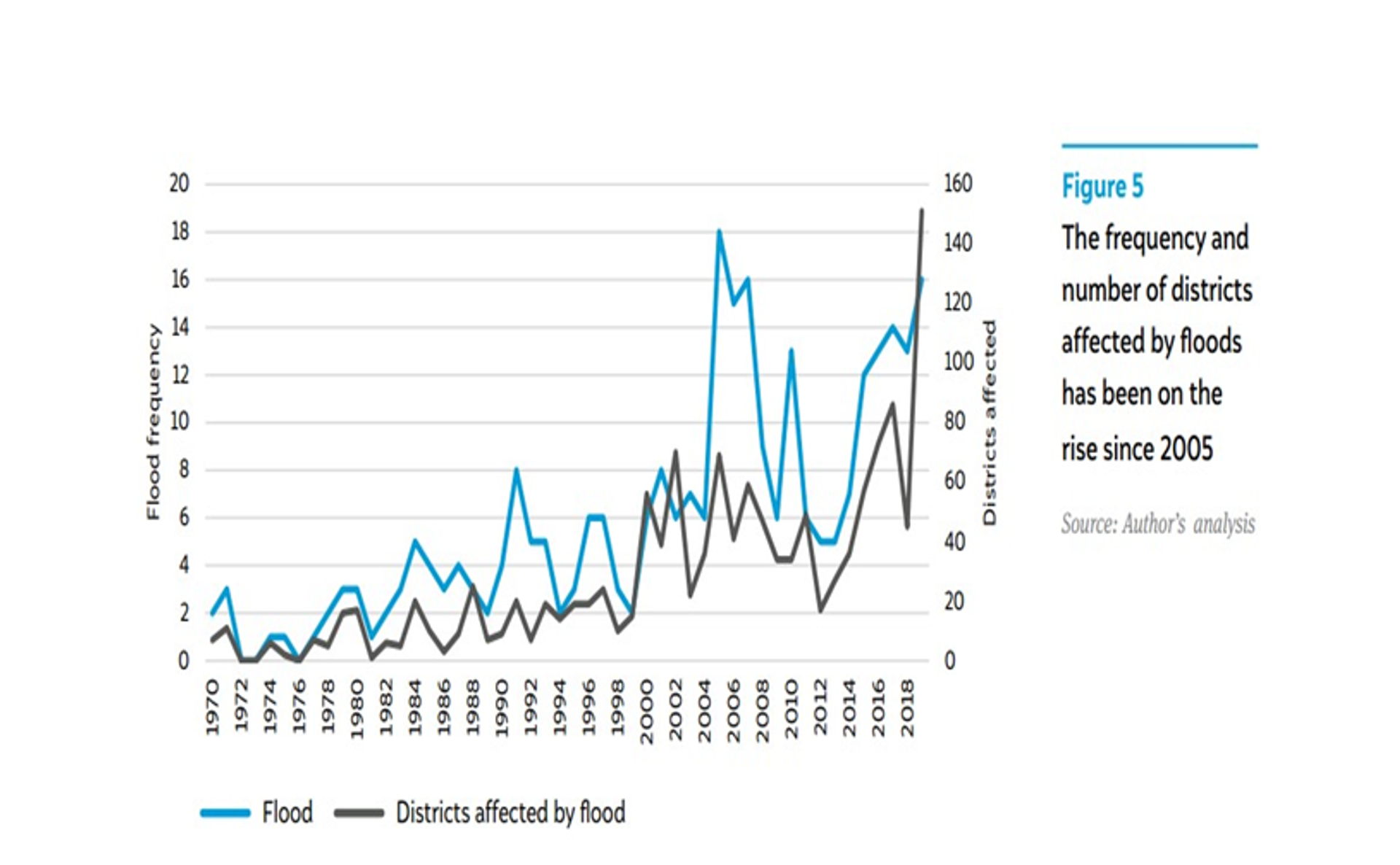https://sputniknews.in/20230711/climate-change-leading-to-extreme-events-pattern-in-india-experts--2935936.html
Climate Change Leading to Extreme Events Pattern in India: Experts
Climate Change Leading to Extreme Events Pattern in India: Experts
Sputnik India
Four days of a massive downpour in parts of North India, accompanied by flash floods and cloud burst incidents, have left many people struggling to return to a normal life.
2023-07-11T18:55+0530
2023-07-11T18:55+0530
2023-07-11T18:55+0530
heatwave in india
india
monsoon rains
the himalayas
arabian sea
new delhi
delhi
uttaranchal
uttarakhand
floods
https://cdn1.img.sputniknews.in/img/07e7/04/14/1620473_0:63:3417:1985_1920x0_80_0_0_9f68425cd594ad619421e186869a9124.jpg
Four days of a massive downpour in parts of North India, accompanied by flash floods and cloud burst incidents, have left many people struggling to return to a normal life. So far, at least 50 people have died, hundreds of houses have collapsed and washed away.Dozens of National Highways roads connecting Himachal Pradesh, Jammu, Kashmir, and Uttarakhand are closed after massive downpours or landslides.The State and Central governments have placed National Disaster Relief Force (NDRF) teams and the Indian Army to rescue people stuck in vulnerable places or in need.Scientists have been warning for several years of such events, the rainfall has become more erratic and intense over a short time.“There has been a constant rise in both land and sea temperatures, which has increased the capacity of the air to hold moisture for a longer time. Thus, the role of climate change in the increasing extreme weather events in India has been strengthening with each passing year,” Palawat added.Dr. Raghavan also said that more studies were needed on other global factors that impact circulations affecting Indian weather, "including Arctic amplification, etc.”The IPCC Report, ‘Weather and Climate Extreme Events in a Changing Climate’, warned that summer and monsoon precipitation will increase and become more frequent. The Indian sub-continent will have a 20 percent surge in extreme rainfall events. The projections suggest that rainfall will become incessant and erratic, leading to floods, depressions will intensify into deep depressions, and cyclonic events will become more frequent across eastern and western coasts.Meanwhile, a report by CEEW titled ‘Preparing India for Extreme Climate Events 2020’ says that India has witnessed more than 478 extreme events since 1970, which increased after 2005. From 1970–2005, there were 250 extreme events, and in 2006 through 2018, almost 310 extreme and associated events, including slow onset events like heatwaves and cold waves.Since 2013, extreme rain events have become a normal pattern in India – earlier Chennai, Bengaluru, Pune, Mumbai, Gurugram, Kerala, Assam, and Bihar witnessed deaths and countless lives were lost.
https://sputniknews.in/20230419/asian-countries-suffer-record-breaking-heatwaves-1613434.html
india
the himalayas
arabian sea
new delhi
delhi
uttaranchal
uttarakhand
himachal pradesh
Sputnik India
feedback.hindi@sputniknews.com
+74956456601
MIA „Rossiya Segodnya“
2023
Deexa Khanduri
https://cdn1.img.sputniknews.in/img/07e6/0c/13/138923_52:0:533:481_100x100_80_0_0_cadf23d341691fc65ff2b22fd1afe584.jpg
Deexa Khanduri
https://cdn1.img.sputniknews.in/img/07e6/0c/13/138923_52:0:533:481_100x100_80_0_0_cadf23d341691fc65ff2b22fd1afe584.jpg
News
en_IN
Sputnik India
feedback.hindi@sputniknews.com
+74956456601
MIA „Rossiya Segodnya“
Sputnik India
feedback.hindi@sputniknews.com
+74956456601
MIA „Rossiya Segodnya“
Deexa Khanduri
https://cdn1.img.sputniknews.in/img/07e6/0c/13/138923_52:0:533:481_100x100_80_0_0_cadf23d341691fc65ff2b22fd1afe584.jpg
extreme weather event, heatwave, heavy rainfalls, national disaster relief force (ndrf) teams, indian army, extreme rain events, chennai, bengaluru, pune, mumbai, gurgaon, kerala, assam, bihar, northwest india, mahesh palawat, western disturbance, western disturbance over western himalayas, cyclonic circulation over northwestern plains, and axis of monsoon, indo-gangetic plains, rise land temperature, rise in sea temperatures, indo-gangetic plains, bay of bengal, arabian sea, ipcc report, western coasts, extreme climate events 2020
extreme weather event, heatwave, heavy rainfalls, national disaster relief force (ndrf) teams, indian army, extreme rain events, chennai, bengaluru, pune, mumbai, gurgaon, kerala, assam, bihar, northwest india, mahesh palawat, western disturbance, western disturbance over western himalayas, cyclonic circulation over northwestern plains, and axis of monsoon, indo-gangetic plains, rise land temperature, rise in sea temperatures, indo-gangetic plains, bay of bengal, arabian sea, ipcc report, western coasts, extreme climate events 2020
Climate Change Leading to Extreme Events Pattern in India: Experts
Deexa Khanduri
Sputnik correspondent
An extreme weather events pattern is making new records every year in India. In 2023, part of the country experienced a record-breaking heatwave in April and June, followed by the longest-duration cyclone formation since 1977 in the Arabian Sea.
Four days of a massive downpour in parts of
North India, accompanied by
flash floods and
cloud burst incidents, have left
many people struggling to return to a normal life. So far, at least 50 people have died, hundreds of houses have collapsed and washed away.
Dozens of National Highways roads connecting Himachal Pradesh, Jammu, Kashmir, and Uttarakhand are closed after massive downpours or landslides.
The State and Central governments have placed
National Disaster Relief Force (NDRF) teams and the
Indian Army to
rescue people stuck in vulnerable places or in need.
Scientists have been warning for several years of such events, the rainfall has become more erratic and intense over a short time.
Speaking particularly about the current ongoing incessant rainfall in northwest India, Mahesh Palawat, Vice President of Meteorology and Climate Change, Skymet Weather, said: “The ongoing situation is due to the alignment of three weather systems -- the Western Disturbance over Western Himalayas, cyclonic circulation over northwestern plains, and Axis of Monsoon trough running across the Indo-Gangetic Plains. And, this is the usual pattern during monsoon, however, global warming-led changes are impacting it.”
“There has been a constant rise in both land and sea temperatures, which has increased the capacity of the air to hold moisture for a longer time. Thus, the role of climate change in the increasing extreme weather events in India has been strengthening with each passing year,” Palawat added.
“Both global surface and ocean temperatures have been increasing, resulting in more evaporation. This has aggravated the rain manifold. The Indo-Gangetic plains have been receiving lots of moisture from the Bay of Bengal as well as from the Arabian Sea. This continuous supply of moisture feed to the weather systems leads to increased rains, which also results in extreme weather events,” said Krishnan Raghavan, Scientist-G, Director, Indian Institute of Tropical Meteorology (IITM).
Dr. Raghavan also said that more studies were needed on other global factors that impact circulations affecting Indian weather, "including Arctic amplification, etc.”
The IPCC Report, ‘
Weather and Climate Extreme Events in a Changing Climate’, warned that summer and monsoon precipitation will increase and become more frequent. The Indian sub-continent will have a 20 percent surge in extreme rainfall events. The projections suggest that rainfall will become incessant and erratic, leading to floods, depressions will intensify into deep depressions, and cyclonic events will become more frequent across eastern and western coasts.
Meanwhile, a report by CEEW titled ‘
Preparing India for Extreme Climate Events 2020’ says that India has witnessed more than 478 extreme events since 1970, which increased after 2005.
From 1970–2005, there were 250 extreme events, and in 2006 through 2018, almost 310 extreme and associated events, including slow onset events like heatwaves and cold waves.
Since 2013, extreme rain events have become a normal pattern in India – earlier Chennai, Bengaluru, Pune, Mumbai, Gurugram, Kerala, Assam, and Bihar witnessed deaths and countless lives were lost.




